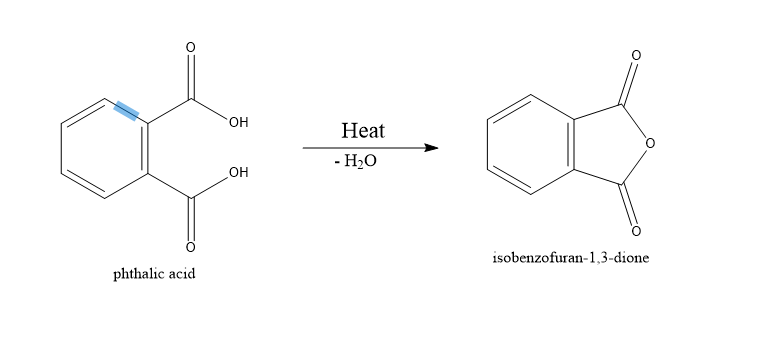Chemistry
10th Edition
ISBN:9781305957404
Author:Steven S. Zumdahl, Susan A. Zumdahl, Donald J. DeCoste
Publisher:Steven S. Zumdahl, Susan A. Zumdahl, Donald J. DeCoste
Chapter1: Chemical Foundations
Section: Chapter Questions
Problem 1RQ: Define and explain the differences between the following terms. a. law and theory b. theory and...
Related questions
Question
Give the major organic product(s) for each of the following reactions. Write NR if a reaction will not occur.

Transcribed Image Text:### Organic Chemistry Reactions
**Reaction 1:**
- **Reactant:** A benzoic acid derivative with two hydroxyl groups and two ketone groups on the benzene ring.
- **Condition:** Heat is applied.
- **Transformation:** The structure suggests a possible decarboxylation or rearrangement.
**Reaction 2:**
- **Starting Material:** 1-bromopentane.
- **Reagent:** Cyanide ion (CN⁻).
- **Intermediate (A):** Cyanide substitution product (nitrile formation).
- **Further Reaction:**
- Reagent: Hydrochloric acid (HCl) with water (H₂O).
- Condition: Heat (Δ).
- Product (B): Implies hydrolysis of nitrile to a carboxylic acid.
**Reaction 3:**
- **Reactants:** A dibutyl malonate ester and ethanol (CH₃CH₂OH).
- **Catalyst:** Acid (H⁺).
- **Process:** This suggests a possible transesterification or an acetal/ketal formation.
These reactions illustrate typical organic transformations like decarboxylation, nucleophilic substitution, hydrolysis, and acid-catalyzed reactions.
Expert Solution
Step 1

Step by step
Solved in 3 steps with 3 images

Recommended textbooks for you

Chemistry
Chemistry
ISBN:
9781305957404
Author:
Steven S. Zumdahl, Susan A. Zumdahl, Donald J. DeCoste
Publisher:
Cengage Learning

Chemistry
Chemistry
ISBN:
9781259911156
Author:
Raymond Chang Dr., Jason Overby Professor
Publisher:
McGraw-Hill Education

Principles of Instrumental Analysis
Chemistry
ISBN:
9781305577213
Author:
Douglas A. Skoog, F. James Holler, Stanley R. Crouch
Publisher:
Cengage Learning

Chemistry
Chemistry
ISBN:
9781305957404
Author:
Steven S. Zumdahl, Susan A. Zumdahl, Donald J. DeCoste
Publisher:
Cengage Learning

Chemistry
Chemistry
ISBN:
9781259911156
Author:
Raymond Chang Dr., Jason Overby Professor
Publisher:
McGraw-Hill Education

Principles of Instrumental Analysis
Chemistry
ISBN:
9781305577213
Author:
Douglas A. Skoog, F. James Holler, Stanley R. Crouch
Publisher:
Cengage Learning

Organic Chemistry
Chemistry
ISBN:
9780078021558
Author:
Janice Gorzynski Smith Dr.
Publisher:
McGraw-Hill Education

Chemistry: Principles and Reactions
Chemistry
ISBN:
9781305079373
Author:
William L. Masterton, Cecile N. Hurley
Publisher:
Cengage Learning

Elementary Principles of Chemical Processes, Bind…
Chemistry
ISBN:
9781118431221
Author:
Richard M. Felder, Ronald W. Rousseau, Lisa G. Bullard
Publisher:
WILEY